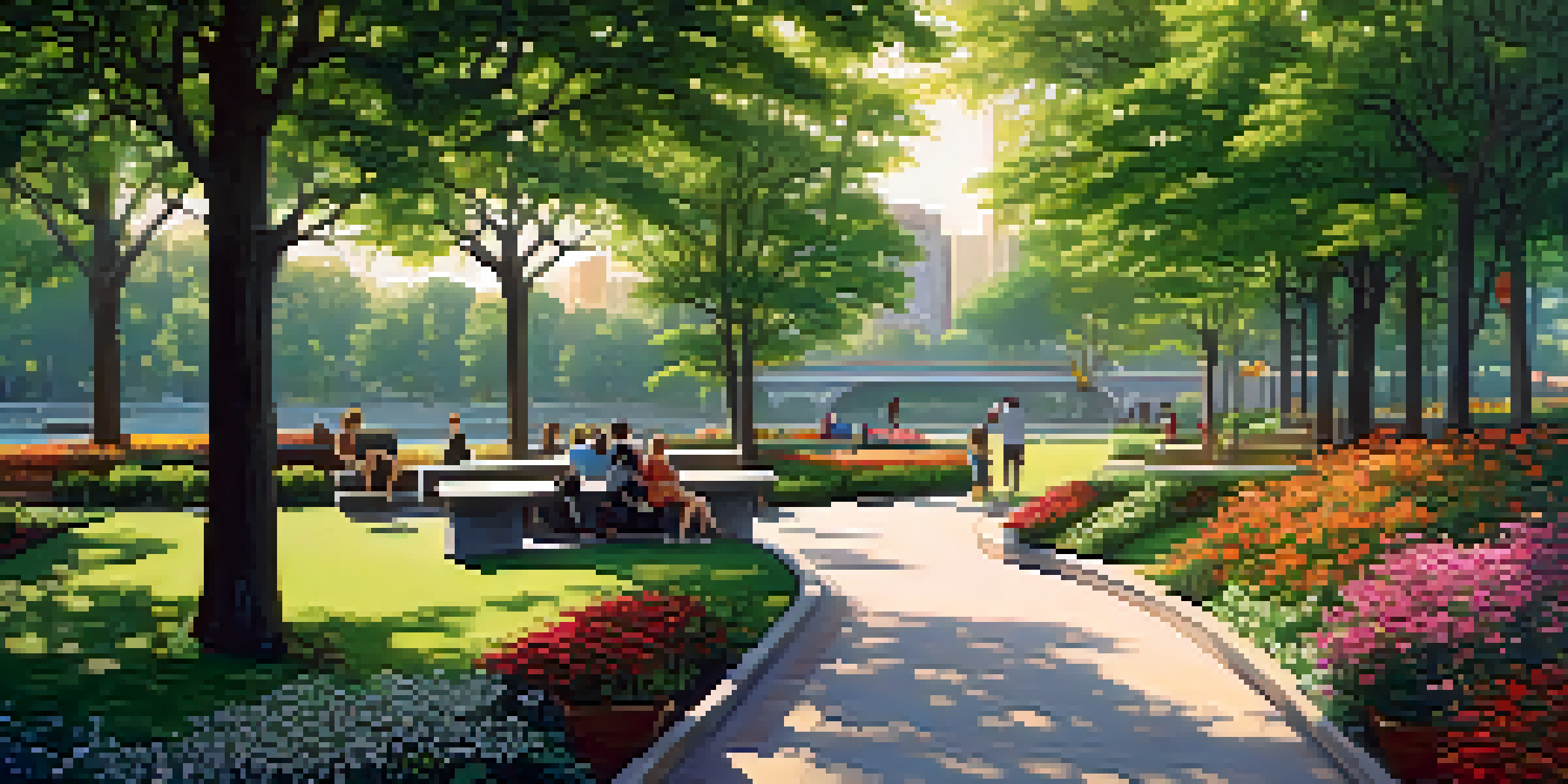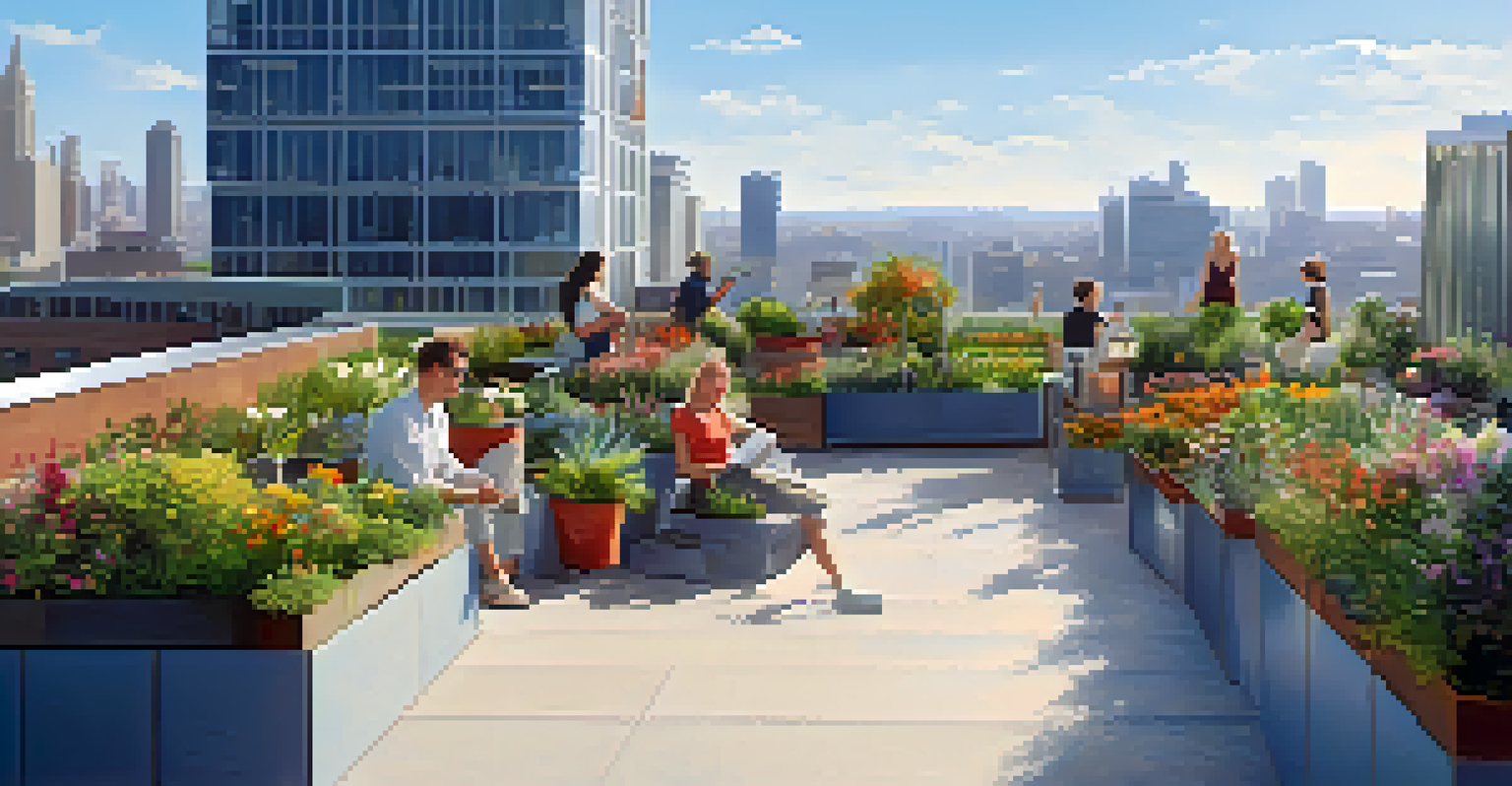The Future of Urban Design: Biophilic Approaches

Understanding Biophilic Design and Its Importance
Biophilic design is an approach that seeks to connect people with nature within urban environments. It emphasizes the inclusion of natural elements in buildings and public spaces, promoting well-being and sustainability. By integrating greenery, natural light, and organic forms, urban planners aim to create healthier and more enjoyable living conditions.
Nature does not hurry, yet everything is accomplished.
This design philosophy is gaining traction as cities face challenges like pollution and urban heat. Research shows that exposure to nature can reduce stress, enhance creativity, and improve overall mental health. As urban populations grow, it's essential to find ways to incorporate biophilic principles into dense environments.
Ultimately, biophilic design is about fostering a deep connection between people and their surroundings. By reimagining cities as spaces that nurture both human and ecological health, we can create vibrant, livable environments that benefit everyone.
The Role of Nature in Urban Spaces
Nature plays a critical role in enhancing urban spaces, providing aesthetic and functional benefits. Parks, green roofs, and vertical gardens not only beautify cityscapes but also improve air quality and support biodiversity. By bringing nature back into our cities, we can create environments that are both pleasant and sustainable.

Moreover, incorporating natural elements helps mitigate urban heat islands, a phenomenon where cities become significantly warmer than surrounding areas. Trees and vegetation can cool the air, reduce energy consumption, and promote a more comfortable outdoor experience. This is especially crucial as climate change intensifies.
Biophilic Design Enhances Well-Being
Integrating nature into urban environments promotes mental health and reduces stress.
In essence, integrating nature into urban settings is not just about aesthetics; it's a necessity for ecological resilience. As cities evolve, the challenge will be to find innovative ways to harmonize built environments with the natural world.
Designing for Well-Being and Mental Health
The impact of urban environments on mental health is profound, and biophilic design offers a path to improvement. Studies indicate that access to green spaces can lower anxiety and depression levels. By prioritizing designs that incorporate natural elements, urban planners can create spaces that promote psychological well-being.
The clearest way into the Universe is through a forest wilderness.
For example, cities with abundant parks and gardens encourage physical activity and social interaction, both of which are vital for mental health. Incorporating water features, natural light, and open spaces can also foster a sense of tranquility and connection to nature. This is particularly important in densely populated areas where personal space is limited.
Ultimately, designing for well-being means considering not just physical health but emotional and mental health as well. As we envision the future of urban design, let's prioritize spaces that nurture a sense of community and foster individual well-being.
Innovative Examples of Biophilic Urban Design
Cities around the world are already implementing biophilic design principles, showcasing innovative solutions to urban challenges. One notable example is Singapore, often dubbed the 'Garden City,' where nature is seamlessly integrated into its urban fabric. From sky gardens to extensive park networks, Singapore serves as a model for balancing urbanization with nature.
Another inspiring case is the Bosco Verticale in Milan, Italy, which features residential towers adorned with thousands of trees and plants. This vertical forest not only enhances the aesthetic appeal of the buildings but also improves air quality and provides habitats for urban wildlife. Such projects highlight the potential of biophilic design to transform urban living.
Nature Improves Urban Sustainability
Incorporating natural elements helps cities manage climate challenges and enhances biodiversity.
These examples illustrate that embracing biophilic principles can lead to innovative and sustainable urban environments. As more cities adopt similar strategies, the future of urban design looks promising, blending nature with urban life harmoniously.
Sustainability Through Biophilic Approaches
Sustainability is at the heart of biophilic design, emphasizing ecological balance and resource efficiency. By incorporating natural systems into urban planning, cities can reduce their environmental impact. Green roofs, rain gardens, and permeable pavements are just a few examples of how biophilic design can enhance sustainability.
These features not only manage stormwater effectively but also provide additional green space for residents. Furthermore, using native plants in landscaping can minimize water usage and support local wildlife, creating a more resilient urban ecosystem. Sustainable practices are essential as cities aim to combat climate change and promote biodiversity.
In the long run, biophilic design offers a pathway to sustainable urban living. By prioritizing ecological health alongside human well-being, cities can create environments that are not only beautiful but also sustainable for future generations.
Community Engagement in Urban Design
An essential aspect of successful biophilic urban design is community engagement. Involving residents in the planning process ensures that designs reflect the needs and desires of the people who will use these spaces. This collaborative approach fosters a sense of ownership and pride in the community.
Workshops, public forums, and interactive design sessions can empower residents to voice their ideas and concerns. By incorporating their feedback, urban planners can create spaces that truly resonate with the community, enhancing the overall quality of life. This participatory approach also encourages stewardship of green spaces, promoting their maintenance and care.
Community Involvement is Key
Engaging residents in urban planning fosters a sense of ownership and enhances the quality of life.
Ultimately, community engagement is vital for creating inclusive urban environments. When residents feel connected to their surroundings, they are more likely to support and protect the natural elements that enhance their neighborhoods.
The Future of Urban Living with Biophilic Design
As we look to the future, biophilic design will play a pivotal role in shaping urban living. The increasing recognition of the importance of nature in our daily lives drives a shift towards greener, healthier cities. Innovations in technology and design will continue to facilitate the integration of nature into urban environments.
Future urban spaces are likely to feature more green infrastructure, such as urban forests, wildlife corridors, and community gardens. These elements will not only enhance the aesthetic appeal of cities but also promote environmental sustainability and community well-being. The vision is for cities to be more than just concrete jungles; they will be vibrant ecosystems.

In conclusion, biophilic design offers a hopeful glimpse into the future of urban living. By prioritizing the integration of nature, we can create urban spaces that foster well-being, sustainability, and a deeper connection to the environment.